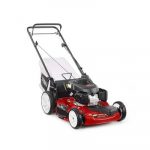Trees are a considerable part of the landscaping of a home. It is not uncommon for homeowners to select trees to provide shade and to contribute to the overall look of the property. Making sure that you have a healthy tree depends on the original choosing at a nursery, proper planting, proper staking, training, and pruning.
Selecting the Tree
There are a number of things to consider when selecting a tree at a nursery. These include the root structure; characteristics of the trunk, foliage and branches, and the tree’s health.
If you are concerned with the survivability and strength of the tree, as you should be, then you need to focus on the structure of its roots. Push the surface soil aside and study the roots. Also check the foliage and branches carefully. Focus your examination on:
· The flare of the roots. Do they widen out evenly from the trunk?
· Root deformation. For the roots to be healthy the trunk should not fall over or the soil line should not be loose when you remove the nursery stake and pull upward on the tree.
· Periphery roots. If they are heavily matted, then the roots are overgrown. That signifies that there could be poor root structure.
· Trunk characteristics. Make sure that the trunk features a gradual taper and caliper in accordance to the height of the tree. Proper taper and caliper assures that the tree can withstand strong winds and stand upright without support.
· Foliage and branching. The foliage should be free of pests and diseases and have good appearance and good leaf color and size. There should be no dead or broken branches and the central leader should be free of co-dominant stems. The branches should be spaced and distributed appropriately around and vertically along the trunk. Branch diameter should not be larger than two-thirds the diameter of the trunk at an inch above the branch. Temporary branches should be on the upper two-thirds of the trunk. This helps in trunk development.
· Injury, stress and pests. The trunk and leaves should have no signs of wounds, lesions, diseases, bleeding, insects and sunburn and should be free from water stress. The soil moisture in the container from which the tree grows should be even. There should be no root discoloration, shriveling, or foul odor.
Proper Planting
The next activity in the process is the proper planting of the tree. Proper planting will assure that the young tree survives.
· Plant trees in the fall. The soil is warmer, it has more moisture, the days are shorter and cooler, and the roots have more time to establish themselves before warm summer temperatures arrive.
· Survey the soil where you intend to plant the tree. Common problems to look for include soil compaction and water-resistant layers. You will need to till the soil if it is compacted and break down the water-resistant layers to improve drainage.
· Remove shoots that are up to 6-inches above the soil.
· Dig the hole twice the diameter and as deep as the root ball.
· Use a shovel to roughen the sides of the hole.
· Remove the tree from the nursery container.
· Remove, cut or shorten matted and circling roots at the periphery of the root ball.
· Put the tree into the hole.
· Back fill with original soil.
· Water thoroughly.
· Spread a thin layer of coarse organic mulch about 3-inches away from the trunk of the tree.
· Perform minor pruning.
(Next time: Staking and Training)







